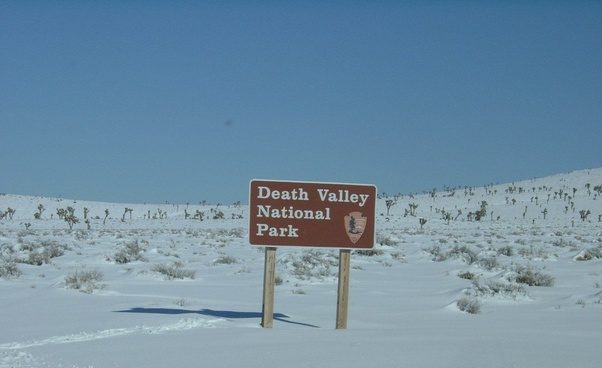Pack your skis, we’re heading to Death Valley. The day it snowed in Death Valley.
The following written content by Mark Puleo

Pack your skis, we’re heading to Death Valley.
The hottest location on Earth has topped the 130-degree mark three times in recorded history, is drier than the Sahara Desert and once, just once, received a half-inch of snow.
It wasn’t the only instance in history that snow has been documented in the desert region, as trace amounts were recorded on five other occasions, but the unprecedented day in 1922 was the only time a measurable amount has ever fallen.
According to data from the National Oceanic Atmospheric Administration (NOAA), the Death Valley snow was observed at a weather station situated at Greenland Ranch on Jan. 29, 1922, when a half-inch was recorded, with no information given as to what time the snow fell.

But that certainly doesn’t mean the snow didn’t fall.
Researchers Steven Roof and Charlie Callagan, in a 2003 article titled “The Climate of Death Valley, California,” published by the Bulletin of the American Meteorological Society, noted that the Furnace Creek observers also reported rainfall from that day, thus eliminating the possibility that they wrote the precipitation value in the wrong column.
The NOAA reportings are part of the publication “A Century of Weather in Death Valley, CA,” published by National Weather Service (NWS) meteorologist Chris Stachelski.
Stachelski wrote that on top of the precipitation note, daily weather maps from the Weather Bureau show that an area of low pressure had moved ashore in Northern California on Jan. 30, while a weather station in nearby Goldfield, Nevada, also recorded snow falling at 12:30 a.m. on Jan. 29.
“Oddly enough, temperatures during this time period in Death Valley were shown to be above freezing,” he said. “The morning low on the 29th was reported to be 36 degrees and the afternoon high was 65 degrees.”
Therefore, the snow most likely fell during the early morning hours of Jan. 29, even if temperatures never dropped below freezing. Read more from AccuWeather.





